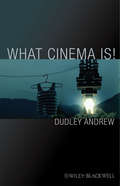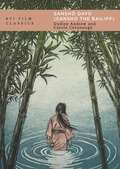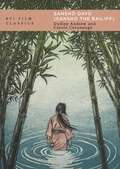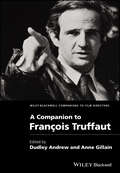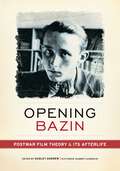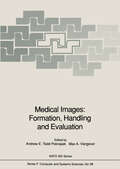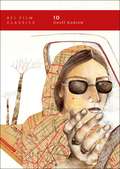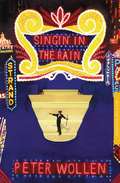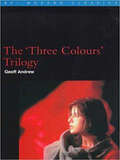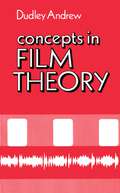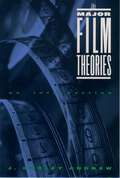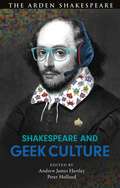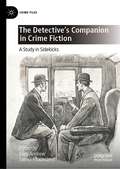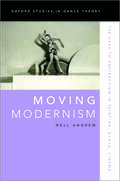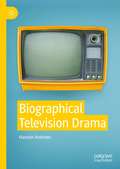- Table View
- List View
What Cinema Is!: Bazin's Quest and its Charge (Wiley-Blackwell Manifestos #65)
by Dudley AndrewWhat Cinema Is! offers an engaging answer to Andre Bazin's famous question, exploring his 'idea of cinema' with a sweeping look back at the near century of Cinema's phenomenal ascendancy. Written by one of the foremost film scholars of our time Establishes cinema's distinction from the current enthusiasm over audio-visual entertainment, without relegating cinema to a single, older mode Examines cinema's institutions and its social force through the qualities of key films Traces the history of an idea that has made cinema supremely alive to (and in) our times
What Cinema Is!: Bazin's Quest and its Charge (Wiley-Blackwell Manifestos)
by Dudley AndrewWhat Cinema Is! offers an engaging answer to Andre Bazin's famous question, exploring his 'idea of cinema' with a sweeping look back at the near century of Cinema's phenomenal ascendancy. Written by one of the foremost film scholars of our time Establishes cinema's distinction from the current enthusiasm over audio-visual entertainment, without relegating cinema to a single, older mode Examines cinema's institutions and its social force through the qualities of key films Traces the history of an idea that has made cinema supremely alive to (and in) our times
Sansho Dayu (BFI Film Classics)
by Dudley Andrew Carole CavanaughKenji Mizoguchi's masterpiece Sanshô Dayû (1954) retells a classic Japanese folktale about an eleventh-century feudal official forced into exile by his political enemies. In his absence, his children fall under the corrupting influence of the malevolent bailiff Sansho. In their study of the film, film scholar Dudley Andrew and Japanese literature professor Carole Cavanaugh highlight the cultural, aesthetic and social contexts of this film which is at once rooted in folk legend and a modern artwork released in the aftermath of World War II. This edition includes a new foreword by the authors in which they consider the film's contemporary parallels in modern slavery and children torn from their families by malevolent authorities.
Sansho Dayu (BFI Film Classics)
by Dudley Andrew Carole CavanaughKenji Mizoguchi's masterpiece Sanshô Dayû (1954) retells a classic Japanese folktale about an eleventh-century feudal official forced into exile by his political enemies. In his absence, his children fall under the corrupting influence of the malevolent bailiff Sansho. In their study of the film, film scholar Dudley Andrew and Japanese literature professor Carole Cavanaugh highlight the cultural, aesthetic and social contexts of this film which is at once rooted in folk legend and a modern artwork released in the aftermath of World War II. This edition includes a new foreword by the authors in which they consider the film's contemporary parallels in modern slavery and children torn from their families by malevolent authorities.
A Companion to François Truffaut (Wiley Blackwell Companions to Film Directors)
by Dudley Andrew Anne GillainThe 34 essays of this collection by leading international scholars reassess Truffaut's impact on cinema as they locate the unique quality of his thematic obsessions and his remarkable narrative techniques. Almost 30 years after his death, we are presented with strikingly original perspectives on his background, influences, and importance.Bridges a gap in film scholarship with a series of 34 original essays by leading film scholars that assess the lasting impact of Truffaut’s work Provides striking new readings of individual films, and new perspectives on Truffaut’s background, influences, and importance Offers a wide choice of critical perspectives ranging from current reflections in film theories to articles applying methodologies that have recently been neglected or considered controversial Includes international viewpoints from a range of European countries, and from Japan, New Zealand, and Brazil Draws on Truffaut’s archives at the BiFI (Bibliotheque du film) in Paris Includes an extended interview with French filmmaker Arnaud Desplechin concerning Truffaut’s shifting stature in French film culture and his manner of thought and work as a director
A Companion to François Truffaut (Wiley Blackwell Companions to Film Directors)
by Dudley Andrew Anne GillainThe 34 essays of this collection by leading international scholars reassess Truffaut's impact on cinema as they locate the unique quality of his thematic obsessions and his remarkable narrative techniques. Almost 30 years after his death, we are presented with strikingly original perspectives on his background, influences, and importance.Bridges a gap in film scholarship with a series of 34 original essays by leading film scholars that assess the lasting impact of Truffaut’s work Provides striking new readings of individual films, and new perspectives on Truffaut’s background, influences, and importance Offers a wide choice of critical perspectives ranging from current reflections in film theories to articles applying methodologies that have recently been neglected or considered controversial Includes international viewpoints from a range of European countries, and from Japan, New Zealand, and Brazil Draws on Truffaut’s archives at the BiFI (Bibliotheque du film) in Paris Includes an extended interview with French filmmaker Arnaud Desplechin concerning Truffaut’s shifting stature in French film culture and his manner of thought and work as a director
Opening Bazin: Postwar Film Theory and Its Afterlife
by Dudley Andrew Herve Joubert-LaurencinWith the full range of his voluminous writings finally viewable, André Bazin seems more deserving than ever to be considered the most influential of all writers on film. His brief career, 1943-58, helped bring about the leap from classical cinema to the modern art of Renoir, Welles, and neorealism. Founder of Cahiers du Cinéma, he encouraged the future New Wave directors to confront his telltale question, What is Cinema? This collection considers another vital question, Who is Bazin? In it, thirty three renowned film scholars--including de Baecque, Elsaesser, Gunning, and MacCabe--tackle Bazin's meaning for the 2st century. They have found in his writings unmistakable traces of Flaubert, Bergson, Breton, and Benjamin and they have pursued this vein to the gold mine of Deleuze and Derrida. They have probed and assessed his ideas on film history, style, and technique, measuring him against today's media regime, while measuring that regime against him. They have located the precious ore of his thought couched within striations of French postwar politics and culture, and they have revealed the unexpected effects of that thought on filmmakers and film culture on four continents. Open Bazin; you will find a treasure.
Opening Bazin: Postwar Film Theory and Its Afterlife
by Dudley Andrew Hervé Joubert-LaurencinWith the full range of his voluminous writings finally viewable, André Bazin seems more deserving than ever to be considered the most influential of all writers on film. His brief career, 1943-58, helped bring about the leap from classical cinema to the modern art of Renoir, Welles, and neorealism. Founder of Cahiers du Cinéma, he encouraged the future New Wave directors to confront his telltale question, What is Cinema? This collection considers another vital question, Who is Bazin? In it, thirty three renowned film scholars--including de Baecque, Elsaesser, Gunning, and MacCabe--tackle Bazin's meaning for the 2st century. They have found in his writings unmistakable traces of Flaubert, Bergson, Breton, and Benjamin and they have pursued this vein to the gold mine of Deleuze and Derrida. They have probed and assessed his ideas on film history, style, and technique, measuring him against today's media regime, while measuring that regime against him. They have located the precious ore of his thought couched within striations of French postwar politics and culture, and they have revealed the unexpected effects of that thought on filmmakers and film culture on four continents. Open Bazin; you will find a treasure.
Medical Images: Formation, Handling and Evaluation (NATO ASI Subseries F: #98)
by Andrew E. Todd-Pokropek Max A. ViergeverMedical imaging is a very important area in diagnostic (and increasingly therapeutic) medicine. Many new techniques are being developed or extended which depend on digital methods. Although conventional x-radiographs still comprise the bulk of the medical images acquired in a hospital, digital methods such as computerized tomography and magnetic resonance imaging are now often claimed to have a more significant clinical impact. This book is concerned with three aspects of such digital images: their formation, or how they can be acquired; their handling, or how they may be manipulated to increase their clinical value; and their evaluation, or how their impact and value may be assessed. The book is divided into three parts. Part 1 comprises a series of reviews in the general subject area written by authorities in the field. Part 2 includes papers on theoretical aspects: 3D images, reconstruction, perception, and image processing. Part 3includes papers on applications in nuclear medicine, magnetic resonance, andradiology.
10 (BFI Film Classics)
by Geoff AndrewThe Iranian director Abbas Kiarostami burst onto the international film scene in the early 1990s and was widely regarded as one of the most distinctive and talented modern-day directors. His major features - including Through the Olive Trees (1994), Taste of Cherry (1997) and The Wind Will Carry Us (1999) - are relatively modest in scale, contemplative and humanist in tone. In 2002, with 10, Kiarostami broke new ground, fixing one or two digital cameras on a car's dashboard to film ten conversations between the driver (Mania Akbari) and her various passengers. The results are astonishing: though formally rigorous, even austere, and documentary-like in its style, 10 succeeds both as emotionally affecting human drama and as a critical analysis of everyday life in modern Tehran.In his study of the film, Geoff Andrew considers 10 within the context of Kiarostami's career, of Iranian cinema's renaissance, and of international film culture. Drawing on a number of detailed interviews he conducted with both Kiarostami and his lead actress, Andrew sheds light on the unusual methods used in making the film, on its political relevance, and on its remarkably subtle aesthetic. He also argues that 10 was an important turning-point in the career of a film-maker who was not only one of contemporary cinema's most accomplished practitioners but also one of its most radical experimentalists.
10: Vels Enhanced (BFI Film Classics)
by Geoff AndrewThe Iranian director Abbas Kiarostami burst onto the international film scene in the early 1990s and was widely regarded as one of the most distinctive and talented modern-day directors. His major features - including Through the Olive Trees (1994), Taste of Cherry (1997) and The Wind Will Carry Us (1999) - are relatively modest in scale, contemplative and humanist in tone. In 2002, with 10, Kiarostami broke new ground, fixing one or two digital cameras on a car's dashboard to film ten conversations between the driver (Mania Akbari) and her various passengers. The results are astonishing: though formally rigorous, even austere, and documentary-like in its style, 10 succeeds both as emotionally affecting human drama and as a critical analysis of everyday life in modern Tehran.In his study of the film, Geoff Andrew considers 10 within the context of Kiarostami's career, of Iranian cinema's renaissance, and of international film culture. Drawing on a number of detailed interviews he conducted with both Kiarostami and his lead actress, Andrew sheds light on the unusual methods used in making the film, on its political relevance, and on its remarkably subtle aesthetic. He also argues that 10 was an important turning-point in the career of a film-maker who was not only one of contemporary cinema's most accomplished practitioners but also one of its most radical experimentalists.
Singin' in the Rain (BFI Film Classics)
by Geoff AndrewSixty years after its release, Singin' in the Rain (1951) remains one of the best loved films ever made. Yet despite dazzling success with the public, it never received its fair share of critical analysis. Gene Kelly's genius as a performer is undeniable. Acknowledged less often is his innovatory contribution as director. Peter Wollen's illuminating study of Singin' in the Rain does justice to this complex film. In a brilliant shot-by-shot analysis of the famous title number, he shows how skilfully Kelly weaves the dance and musical elements into the narrative, successfully combining two distinctive traditions within American Dance: tap and ballet. At the time of the film's production, its scriptwriters Betty Comden and Adolph Green, and indeed Kelly himself, were all under threat from McCarthyism. Wollen describes how the fallout from blacklisting curtailed the careers of many of those who worked on the film and argues convincingly that the film represents the high point in their careers. In his foreword to this special edition, published to celebrate the 20th anniversary of the BFI Film Classics series, Geoff Andrew looks at the film's legacy and celebrates the passion, lucidity and originality of Wollen's analysis. Summing up its enduring appeal, Andrew writes: 'Singin' in the Rain isn't just a musical, it's a movie about the movies.'
Singin' in the Rain (BFI Film Classics)
by Geoff AndrewSixty years after its release, Singin' in the Rain (1951) remains one of the best loved films ever made. Yet despite dazzling success with the public, it never received its fair share of critical analysis. Gene Kelly's genius as a performer is undeniable. Acknowledged less often is his innovatory contribution as director. Peter Wollen's illuminating study of Singin' in the Rain does justice to this complex film. In a brilliant shot-by-shot analysis of the famous title number, he shows how skilfully Kelly weaves the dance and musical elements into the narrative, successfully combining two distinctive traditions within American Dance: tap and ballet. At the time of the film's production, its scriptwriters Betty Comden and Adolph Green, and indeed Kelly himself, were all under threat from McCarthyism. Wollen describes how the fallout from blacklisting curtailed the careers of many of those who worked on the film and argues convincingly that the film represents the high point in their careers. In his foreword to this special edition, published to celebrate the 20th anniversary of the BFI Film Classics series, Geoff Andrew looks at the film's legacy and celebrates the passion, lucidity and originality of Wollen's analysis. Summing up its enduring appeal, Andrew writes: 'Singin' in the Rain isn't just a musical, it's a movie about the movies.'
The 'Three Colours' Trilogy (BFI Film Classics)
by Geoff AndrewThis appreciative account of the 'Three Colours' trilogy communicates the power and imagery of the films, and demonstrates how Kieslowski's art is brought to bear in their moving renditions of the lives of its characters. An interview with Kieslowsi shortly before his death concludes this tribute.
The 'Three Colours' Trilogy (BFI Film Classics)
by Geoff AndrewThis appreciative account of the 'Three Colours' trilogy communicates the power and imagery of the films, and demonstrates how Kieslowski's art is brought to bear in their moving renditions of the lives of its characters. An interview with Kieslowsi shortly before his death concludes this tribute.
Concepts in Film Theory
by J. Dudley AndrewConcepts in Film Theory is a continuation of Dudley Andrew's classic, The Major Film Theories. In writing now about contemporary theory, Andrew focuses on the key concepts in film study -- perception, representation, signification, narrative structure, adaptation, evaluation, identification, figuration, and interpretation. Beginning with an introductory chapter on the current state of film theory, Andrew goes on to build an overall view of film, presenting his own ideas on each concept, and giving a sense of the interdependence of these concepts. Andrew provides lucid explanations of theories which involve perceptual psychology and structuralism; semiotics and psychoanalysis; hermeneutics and genre study. His clear approach to these often obscure theories enables students to acquire the background they need to enrich their understanding of film -- and of art.
The Major Film Theories: An Introduction (Galaxy Books)
by J. Dudley AndrewBoth a history of film theory and an introduction to the work of the most important writers in the field, Andrew's volume reveals the bases of thought of such major theorists as Munsterberg, Arnheim, Eisenstein, Balazs, Kracauer, Bazin, Mitry, and Metz.
Shakespeare and Geek Culture
by Andrew James Hartley and Peter HollandFrom fantasy and sci-fi to graphic novels, from boy scouts to board games, from blockbuster films to the cult of theatre, Shakespeare is everywhere in popular culture. Where there is popular culture there are fans and nerds and geeks. The essays in this collection on Shakespeare and Geek Culture take an innovative approach to the study of Shakespeare's cultural presences, situating his works, his image and his brand to locate and explore the nature of that geekiness that, the authors argue, is a vital but unrecognized feature of the world of those who enjoy and are obsessed by Shakespeare, whether they are scholars, film fans, theatre-goers or members of legions of other groupings in which Shakespeare plays his part.Working at the intersections of a wide range of fields ? including fan studies and film analysis, cultural studies and fantasy/sci-fi theory – the authors demonstrate how the particularities of the connection between Shakespeare and geek culture generate new insights into the plays, poems and their larger cultural legacy in the 21st century.
Making Healthy Places: Designing and Building for Health, Well-being, and Sustainability
by Andrew L. Dannenberg, Howard Frumkin and Richard J. JacksonThis book provides a far-reaching follow-up to the pathbreaking Urban Sprawl and Public Health, published by Island Press in 2004. That book sparked a range of inquiries into the connections between constructed environments, particularly cities and suburbs, and human health. Since then, numerous studies have extended and refined the book's research and reporting. Making Healthy Places offers a fresh and comprehensive look at this vital subject today, from the scale of buildings up to the scale of metropolitan areas.There is no other book with the depth, breadth, vision and accessibility that this book offers. Like a well-trained doctor, it presents a diagnosis of-and offers treatment for-problems related to the built environment. Drawing on the latest scientific evidence, with contributions from experts in a range of fields, it imparts a wealth of practical information, emphasizing demonstrated and promising solutions to common problems. Health professionals, planners, architects, developers, elected officials, students, and concerned members of the public will find this book invaluable.
The Detective's Companion in Crime Fiction: A Study in Sidekicks (Crime Files)
by Lucy Andrew Samuel SaundersThis book aims to establish the position of the sidekick character in the crime and detective fiction literary genres. It re-evaluates the traditional view that the sidekick character in these genres is often overlooked as having a small, generic or singular role—either to act as the foil to the detective in order to accentuate their own abilities at solving crimes, or else to simply tell the story to the reader. Instead, essays in the collection explore the representations and functions of the detective’s sidekick across a range of forms and subgenres of crime fiction. By incorporating forms such as children’s detective fiction, comics and graphic novels and film and television alongside the more traditional fare of novels and short stories, this book aims to break down the boundaries that sometimes exist between these forms, using the sidekick as a defining thread to link them together into a wider conceptual argument that covers a broad range of crime narratives.
The Ethics of Nanotechnology, Geoengineering, and Clean Energy
by Andrew Maynard and Jack StilgoeNanotechnology, clean technology, and geoengineering span the scale of human ingenuity, from the imperceptibly small to the unimaginably large. Yet they are united by a commonality of ethics that permeates how and why they are developed, and how the resulting consequences are managed. The articles in this volume provide a comprehensive account of current thinking around the ethics of development and use within each of the technological domains, and addresses challenges and opportunities that cut across all three. In particular, the collection provides unique insights into the ethics of ’noumenal’ technologies - technologies that are impossible to see or detect or conceive of with human senses or conventional tools. This collection will be of relevance to anyone who is actively involved with ensuring the responsible and sustainable development of nanotechnology, geoengineering or clean technology.
Moving Modernism: The Urge to Abstraction in Painting, Dance, Cinema (Oxford Studies in Dance Theory)
by Nell AndrewThe emergence of modern dance and the early history of cinema ran concurrent with the European avant-garde's development of pictorial abstraction in the first decades of the 20th century. However, many assume that modernist abstraction resulted from a century of natural, autonomous evolution to painting styles and tastes. In Moving Modernism, author Nell Andrew challenges this assumption. By examining dance and film created during this period, she argues that performative modes of art created the link between bodily movement and movement depicted in modernist paintings. In a seeming paradox, dance and film - durational arts, involving real bodies in space-participated in the development of abstract art. With archival material collected in North America and Europe, Moving Modernism resurfaces lost performances, identifies working methods, and establishes the circles of aesthetic influence and reception for avant-garde dance pioneers and experimental film makers from the turn of the century to the interwar period. Reexamining the motivation that fueled the emergence of abstraction, Andrew claims that painters sought meaning not only in the material and formal picture but also in temporal and sensorial experience. Andrew looks at major figures and intellectual movements including Loïe Fuller and Symbolism; Valentine de Saint-Point and the Cubo-Futurist and neo-Symbolist movements; and early cinematic abstraction from Edison and the Lumières to Hans Richter and Marcel Duchamp. Close examinations of each figure show that theatrical display, embodied self-projection, and kinesthetic desire are not necessarily in opposition to pictorial abstraction; in fact, they expand our understanding of the urges that created modern art.
Moving Modernism: The Urge to Abstraction in Painting, Dance, Cinema (Oxford Studies in Dance Theory)
by Nell AndrewThe emergence of modern dance and the early history of cinema ran concurrent with the European avant-garde's development of pictorial abstraction in the first decades of the 20th century. However, many assume that modernist abstraction resulted from a century of natural, autonomous evolution to painting styles and tastes. In Moving Modernism, author Nell Andrew challenges this assumption. By examining dance and film created during this period, she argues that performative modes of art created the link between bodily movement and movement depicted in modernist paintings. In a seeming paradox, dance and film - durational arts, involving real bodies in space-participated in the development of abstract art. With archival material collected in North America and Europe, Moving Modernism resurfaces lost performances, identifies working methods, and establishes the circles of aesthetic influence and reception for avant-garde dance pioneers and experimental film makers from the turn of the century to the interwar period. Reexamining the motivation that fueled the emergence of abstraction, Andrew claims that painters sought meaning not only in the material and formal picture but also in temporal and sensorial experience. Andrew looks at major figures and intellectual movements including Loïe Fuller and Symbolism; Valentine de Saint-Point and the Cubo-Futurist and neo-Symbolist movements; and early cinematic abstraction from Edison and the Lumières to Hans Richter and Marcel Duchamp. Close examinations of each figure show that theatrical display, embodied self-projection, and kinesthetic desire are not necessarily in opposition to pictorial abstraction; in fact, they expand our understanding of the urges that created modern art.
Contemporary Irish Poetry: A Collection of Critical Essays
by Elmer AndrewsContains 14 essays dealing with the poetry that has come out of Ireland since the mid-1960s. The first half of the book is devoted to general issues and themes, and takes account of the interrelationships of contemporary Irish poetry. The second half concentrates on the work of individual poets.
Biographical Television Drama
by Hannah Andrews“Biographical Television Drama breaks new ground as, to my knowledge, the first book-length exploration of the terms in which television engages in biographical storytelling. Backed by robust research in biography studies and British television history, Hannah Andrews deftly unravels the complexities behind the accessibility of biographical television drama. Her book tackles key questions head-on, notably rhetorics and style, narrative and performance and, innovatively, ethics, while also shedding light on the interconnections with other biographical screen forms through a rich corpus. This is an essential critical study that vindicates television drama’s unique place in the histories and practices of screen biography.”-Belén Vidal, Senior Lecturer in Film Studies at King’s College London and co-editor of The Biopic in Contemporary Film CultureThis book explores what happens when biography and television meet, in a novel fusion of the two fields of study. Andrews compares core concepts in biography and television studies such as intimacy, the presentation of the self and the uneasy relationship between fact and fiction. The book examines biographical drama’s generic hybridity, accounting for the influence of the film biopic, docudrama, melodrama and period drama. It discusses biographical television drama’s representation of real lives in terms of visual style, performance and self-reflexivity. Andrews also assesses how life stories are shaped for televisual narrative formats and analyses the adaptation process for the biographical drama. Finally, the book considers various kinds of reputation – of the broadcast institution, author, biographical subject – in relation to the ethics of televisual biography.
